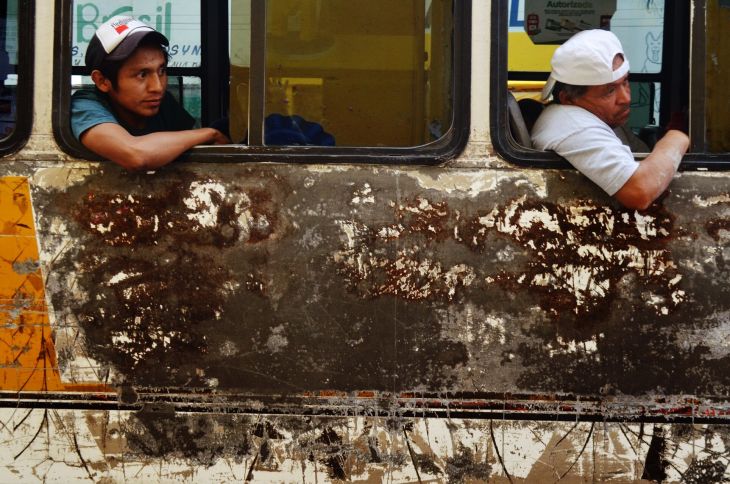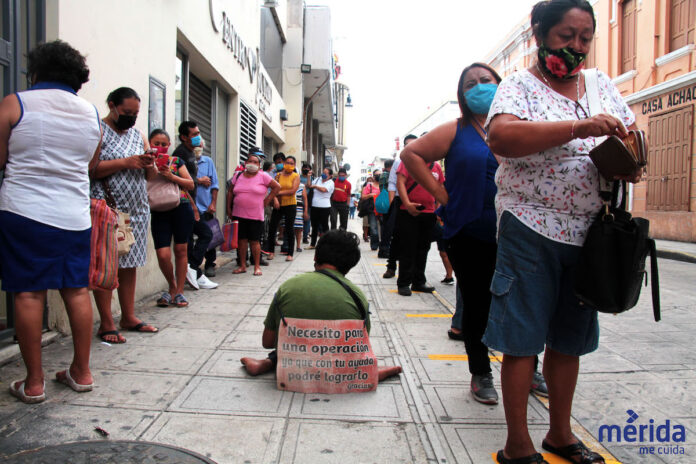The World Resources Institute assessed it as an uneven city without optimal transportation
The growth of Mérida has been distant, dispersed and disconnected, away from the well-being of the population and favoring real estate developments without planning, recognized Fernando Páez Mendieta, director of Urban Mobility for Mexico and Colombia at the Mexico World Resources Institute (WRI) Mexico, for its acronym in English.
Developments are created in the peripheries, far from basic services with a poor transportation system, which increases the use of private motor vehicles and creates an uneven city, he pointed out.
“Urban planning is needed that has the person as the center of the solution and that guarantees timely access to goods and services,” he said.
In the study The cost of urban expansion in Mexico, carried out by the Coalition for Urban Transformation in Mexico together with WRI Mexico, it was evidenced that the uncontrolled urban expansion of the city of Mérida has generated various economic and social costs, in addition to environmental problems and inequality; “The current model is not financially sustainable in the long term.”
The research, which analyzes the cost of peripheral urban expansion in eight metropolitan areas: Mexico City, Guadalajara, Monterrey, Tijuana, Reynosa, Mérida, Tuxtla Gutiérrez, and Culiacán shows that the current model of urban development is not financially viable in the long term due to insufficient municipal collection and higher costs of travel and provision of services in cities with greater dispersion and vulnerability to climate change.
Mérida is promoted by the authorities, due to its quality of life, as the best city to reside, invest and visit, which has caused many people to come to live in the capital, triggering a growth in urban developments, however, experts point out that adequate planning is lacking.

Páez Mendieta indicated that by having this distant, dispersed and disconnected growth, a rupture between urban development and transport is generated, this link translates into inaccessibility to jobs, services, health and well-being; which in turn generates growth in the automotive vehicle fleet.
“As there is no public transport offer, the solution for people who require access is through private vehicles and motorcycles,” he said.
According to the specialist, the city has experienced an increase in urban development, also due to the arrival of migrants who see it as a great opportunity for tranquility and quality of life conditions, however, there are these donations of disconnection and dispersal.
“There is no efficient public transport service that connects these new developments that are taking place, and connect with services,” he said.
This, as he explained, causes high rates of motorization and therefore a loss of productivity due to congestion and low efficiency in urban mobility.
Although currently, the Yucatecan capital does not present a severe problem in this matter, the trend is at that point, so the authorities must work to strengthen the public transport system, thinking from the intermodality that guarantees that people can use the bicycle, go on foot or by car and connect with transport.
Uneven city
In addition to the fact that this type of unrelated growth generates high costs, it causes conditions of inequality. “In areas of the city, these types of informal developments begin to occur or with people who have lower income possibilities, compared to developments that are designed for people who have greater purchasing power and that is generating inequality gaps,” he said. .
Also, those who do not have the possibility of accessing a car, and their option to use poor quality transportation, face difficulty in accessing job opportunities, education, and recreational and health goods and services.
What is the city model that should be applied in Mérida?
For the former director of Integrated Transportation Systems of CTS EMBARQ Mexico, the authorities must do a strong job in structuring urban planning processes that define a vision of the city in terms of its urban growth, its economic opportunities and what are the projections of population growth.
This planning, he added, must consider the conservation of the ecological structure to conserve green areas, bodies of water, and all ecosystems.
They must also have mobility infrastructure, public space and equipment that allow people’s accessibility to goods and services. Ensure that citizens, in accordance with urban development policies, have accurate access to services. “That in urban developments it is guaranteed that citizens have health, school, supply of goods, recreational services and that displacements are reduced,” he said.
In addition to this, equitable, sustainable, safe and efficient access for the population must be guaranteed, and people must always be at the center.
“Cities must be seen integrally to serve the common interest of those who inhabit them and that leads the city to think from a systemic and organized vision, about urban development and mobility,” he said.
This approach, he specified, ensures that there is a better use of public and private investments, with territorial planning. “To achieve a city focused on people, sustainable, where people move less, but better, requires a territorial planning approach with a comprehensive vision,” he stressed.
If these types of points are not taken into account, he warned that energy costs, climate impact, costs for citizens in terms of productivity will increase.
.jpg)
A city that discriminates is not sustainable: UN-Habitat
Private or closed condominiums do not pay for compliance with urban development
One of the objectives of commemorating World Cities Day every October 31 lies in the defense of urbanization as a way of social inclusion, however, the forms of development tend to increase inequality and exclusion and Mexico is no exception. .
Elkin Velásquez, regional director for Latin America and the Caribbean of the United Nations Human Settlements Program (UN-Habitat), points out that in terms of the urban agenda, a sustainable city must meet at least four criteria: be compact and efficient; be connected; be integrated with their rural environment and be inclusive.
The representative of UN-Habitat warns that the first point to take into account is an urban development plan that creates the conditions for homes to have access to health, education, recreation, public spaces, proximity to the job offer and that allows the coexistence of different social groups.
“Citizens must have close access to all services, an issue that is achieved only with a planning exercise … You have to manage the land in a very rational way to allocate it to homes, green areas and public spaces,” he explains.
And it is that without proper planning an efficient city cannot be achieved. Informal settlements, poor public transportation system, few green areas, lack of infrastructure suitable for the entire population, and places that segregate and discriminate -such as private ones or countries- do not pay for compliance with the criteria.
“Anything that is a closed condominium does not contribute to sustainability. All the groups of isolated families that do not pay for inclusion… The mixture of different socio-anthropological groups is very important so that there is that characteristic of the vibrant city, that arises from the exchange between different groups, that there is cultural development ”, highlights Elkin Velasquez.
In Latin America and the Caribbean, including Mexico, one in five people who live in urban environments does so in informal or precarious neighborhoods, where there are unsatisfied basic needs. This is the result of the lack of urban design.
And it has an impact not only social but also economic.
“Everything we stop doing to develop well, to develop neighborhoods well in a planned way, then we will have to pay eight times more expensive as a society,” explains Velásquez based on figures from the Inter-American Development Bank.
The challenges to meet the criteria of a sustainable city lie in the promotion of forms of mobility that do not use fossil fuels, such as walking or cycling; create a connection with the environment and rural areas; ensure that there are urban spaces dedicated to public use.
“Each city starts from what its history is, what its culture is and takes its own criteria to ground them to its reality, but it must build a plan to develop this process,” said Velásquez.
In 2022, the Member States of the United Nations will review a new urban agenda to identify forms of sustainable growth in the framework of the Covid-19 pandemic and climate change, which is expected to establish lines to target more inclusive cities. , safe, resilient and sustainable.
Source: yucatanalamano.com, lajornadamaya.mx






